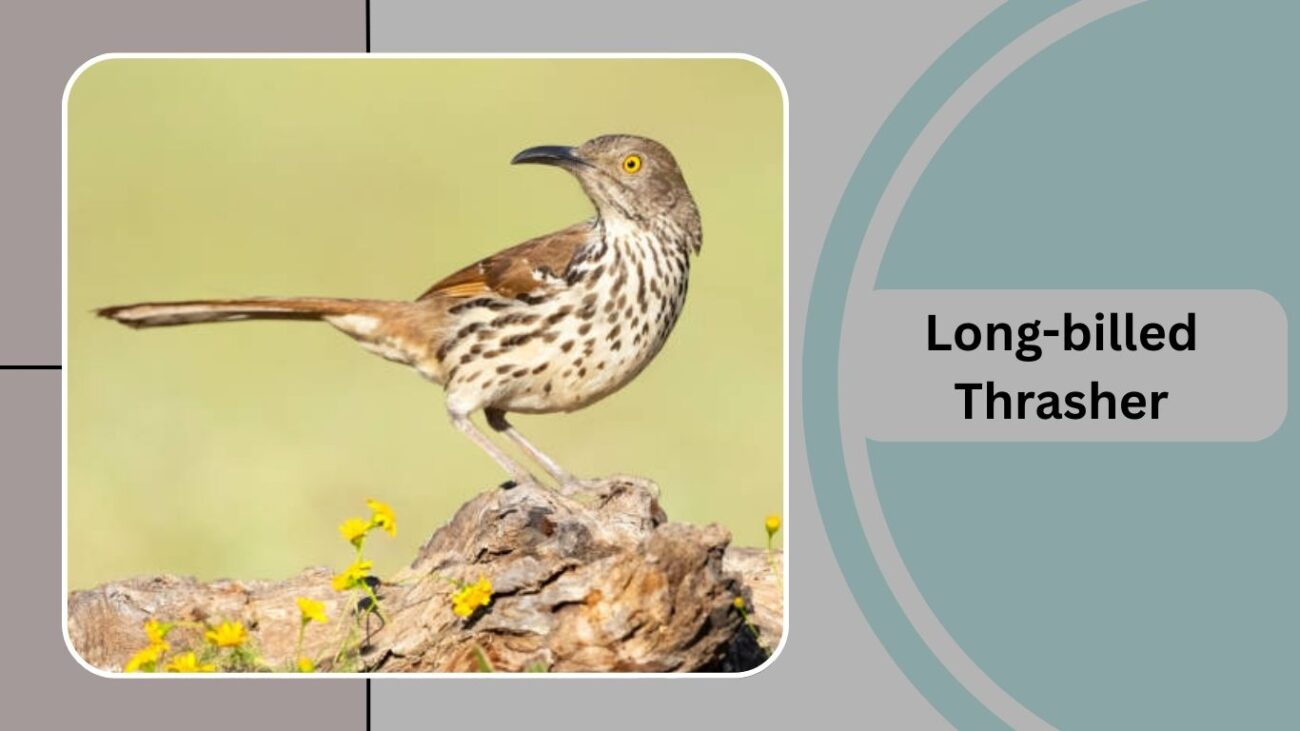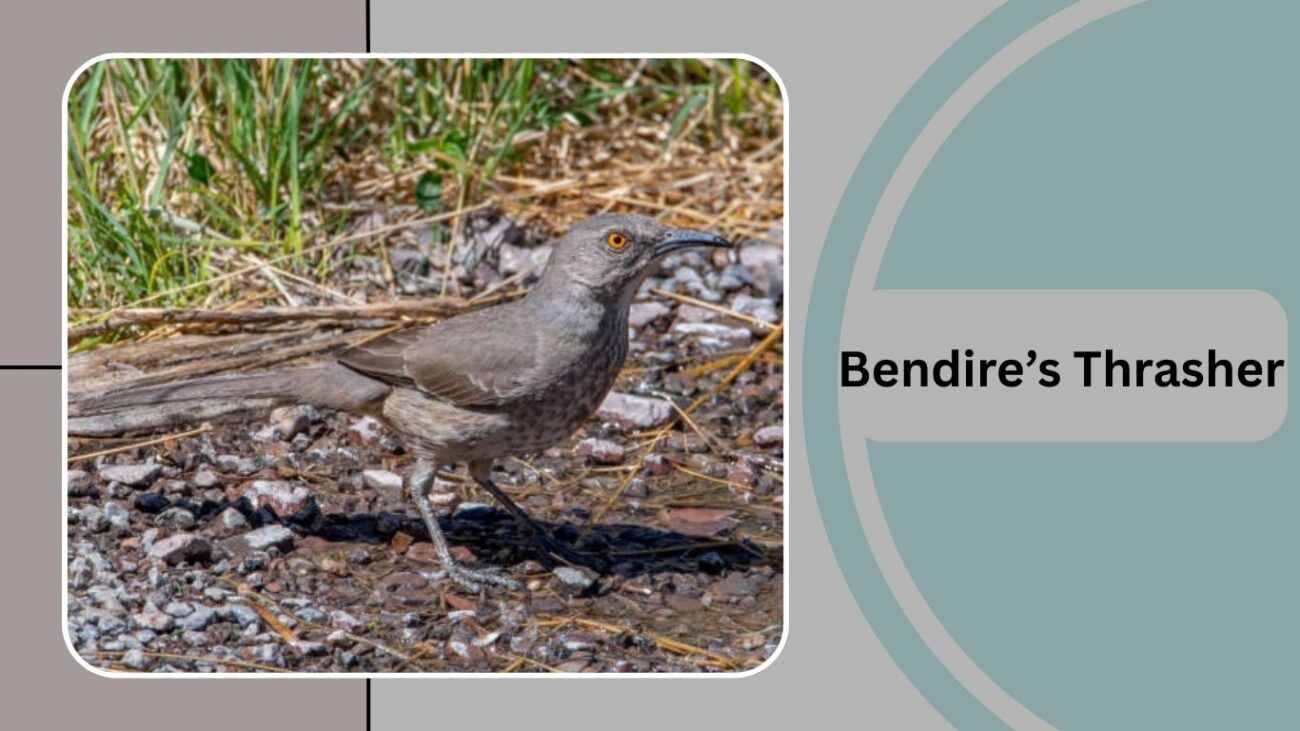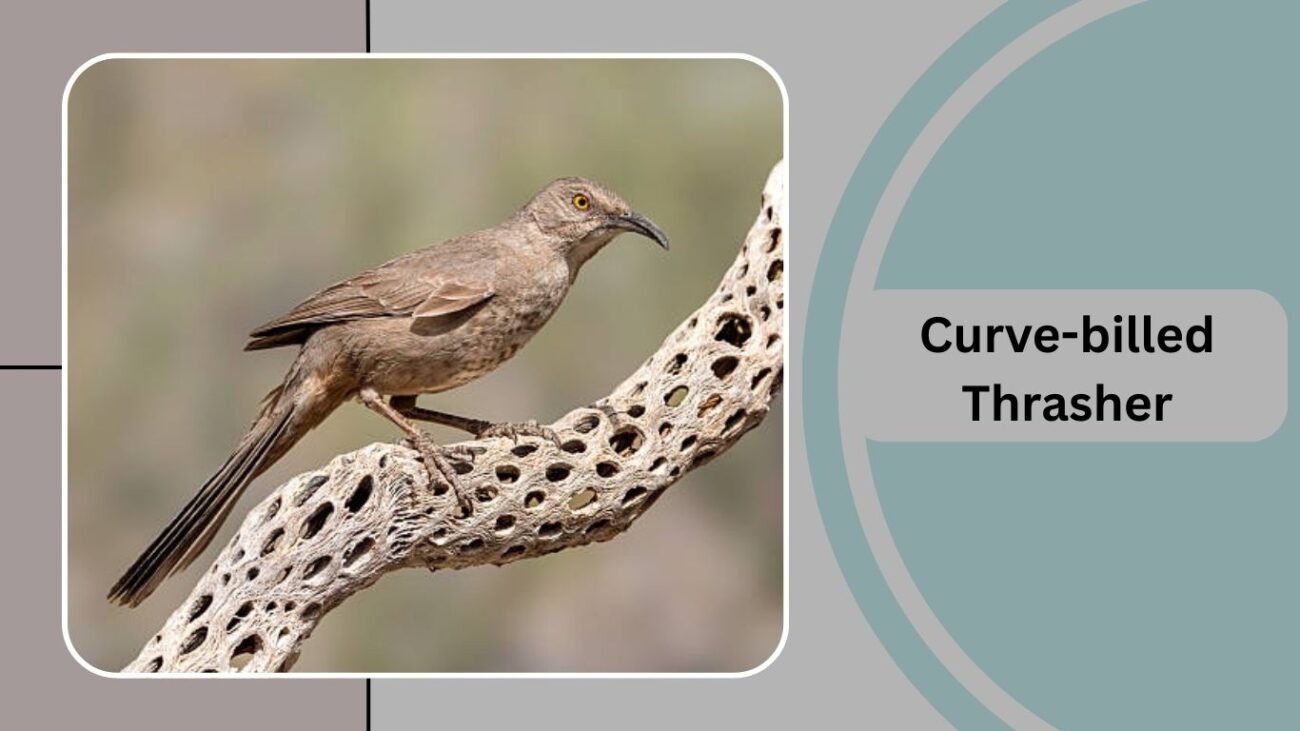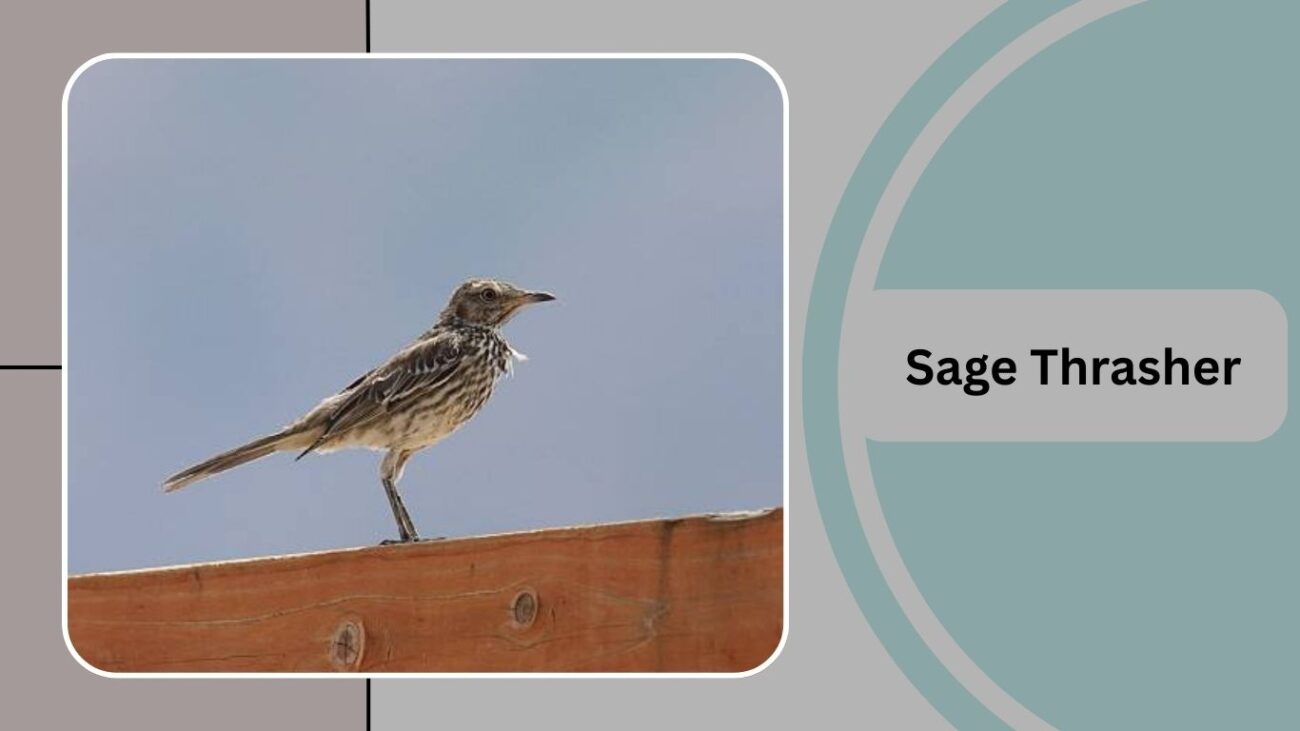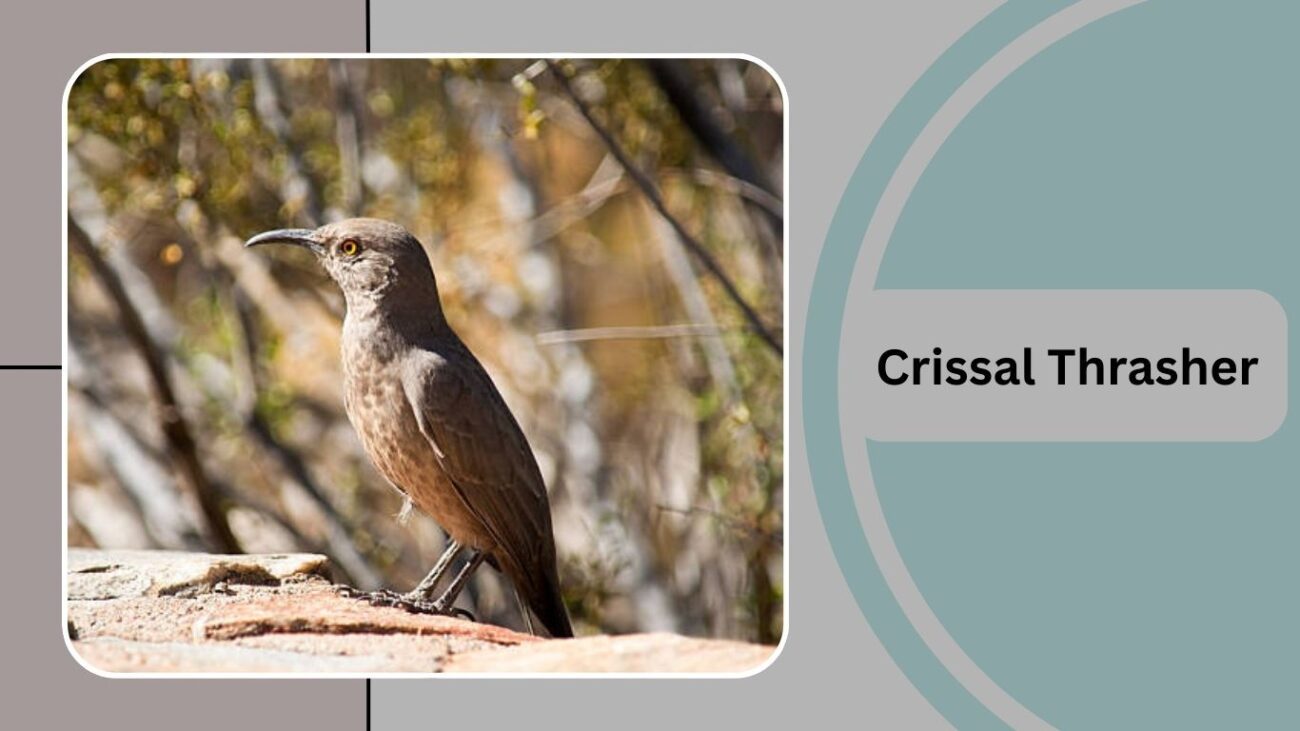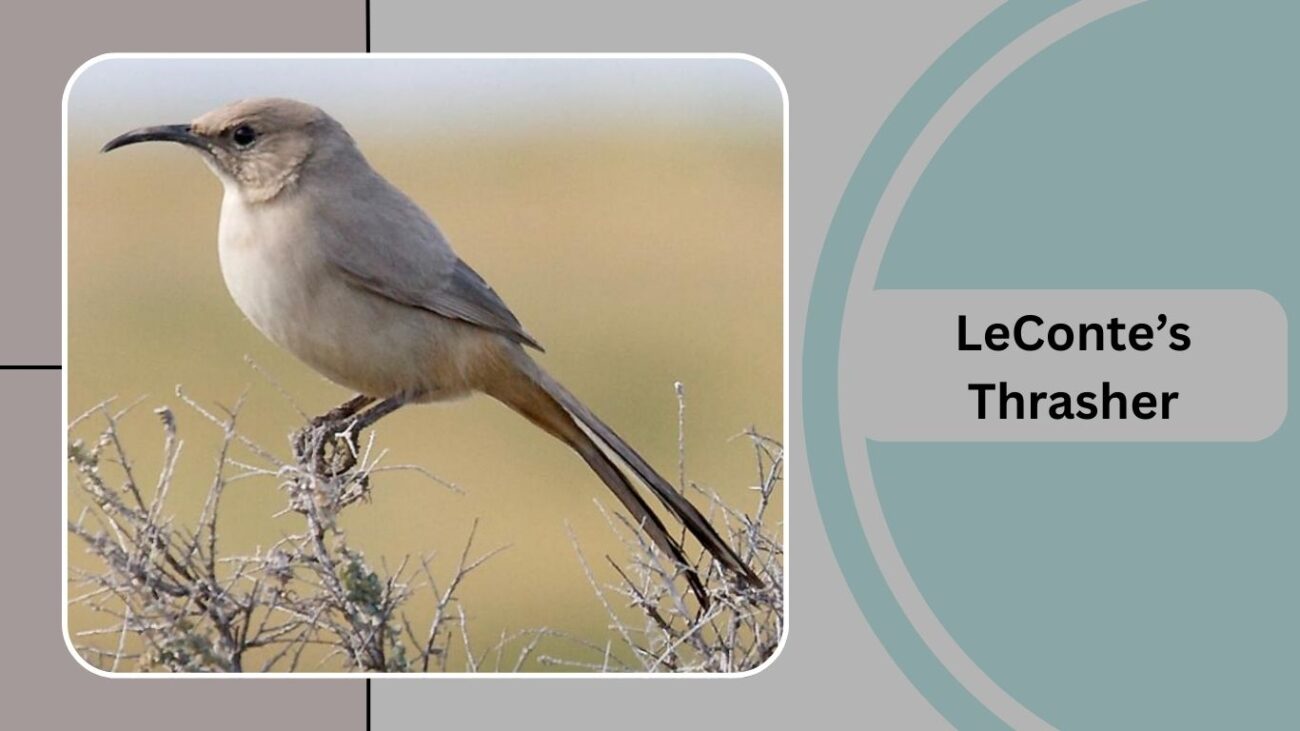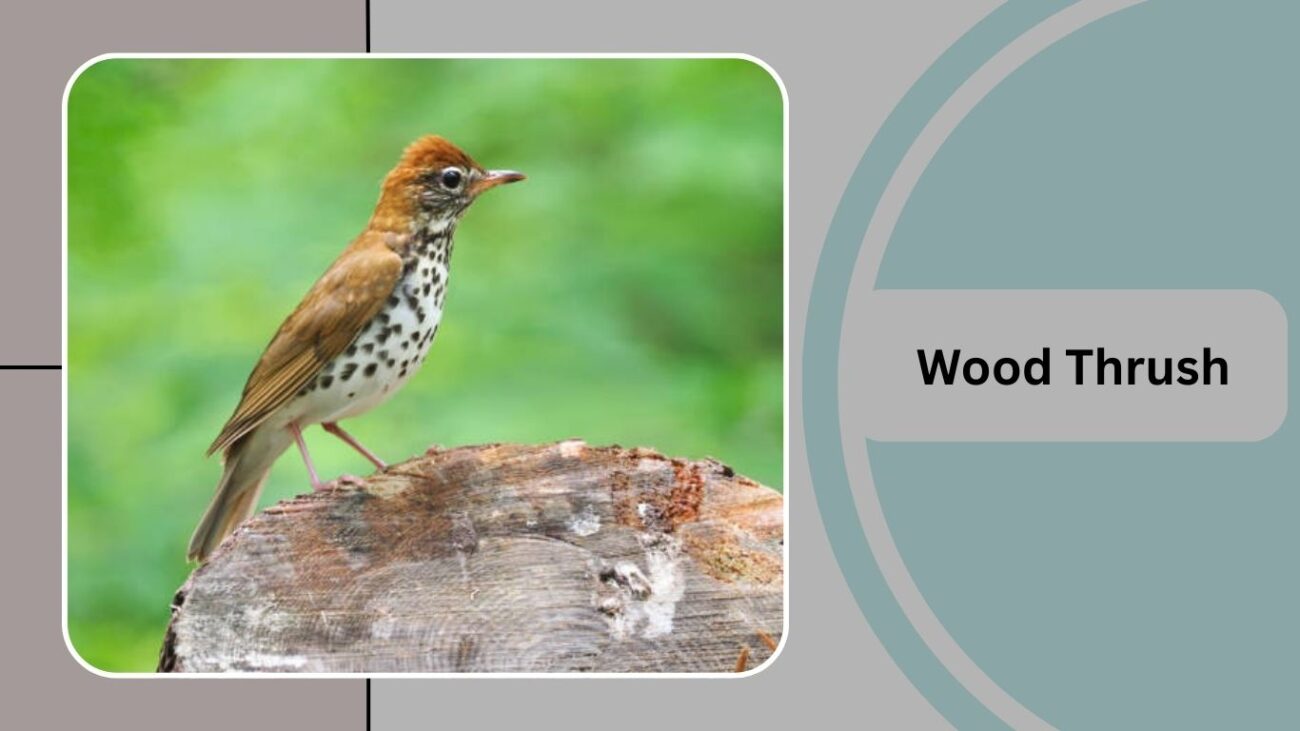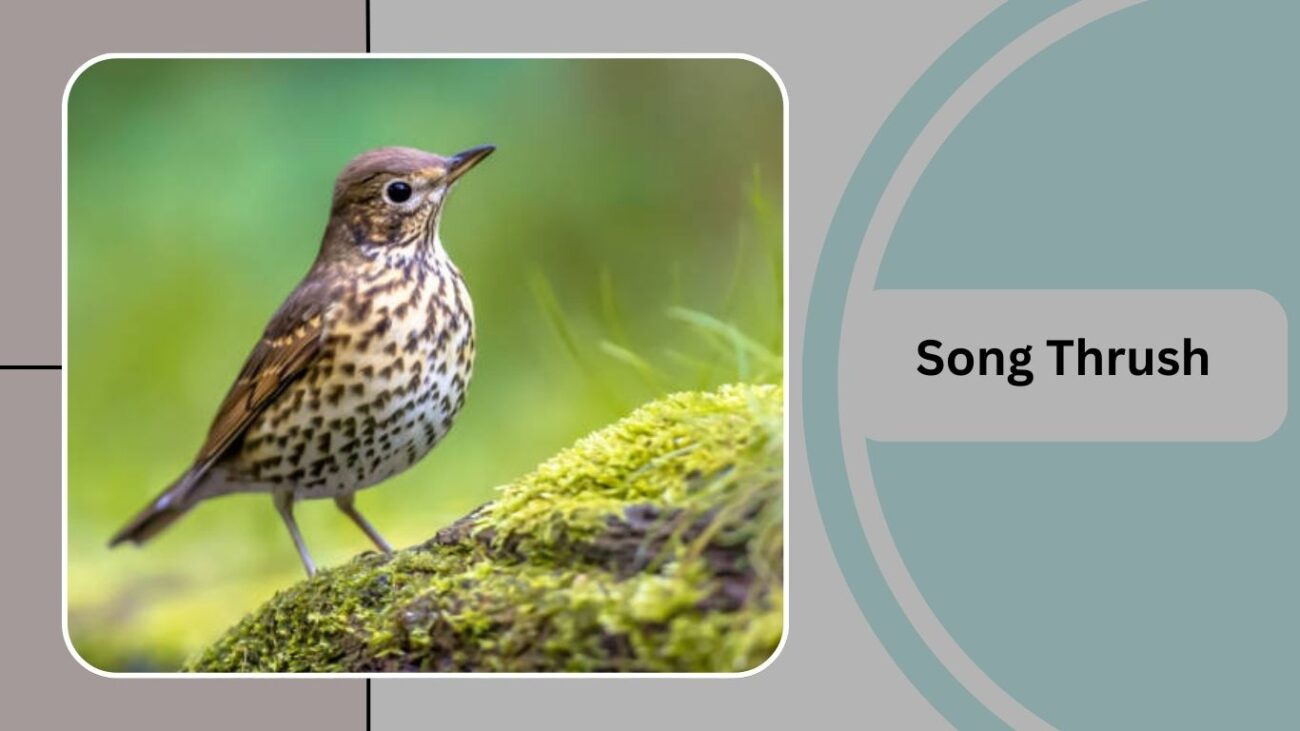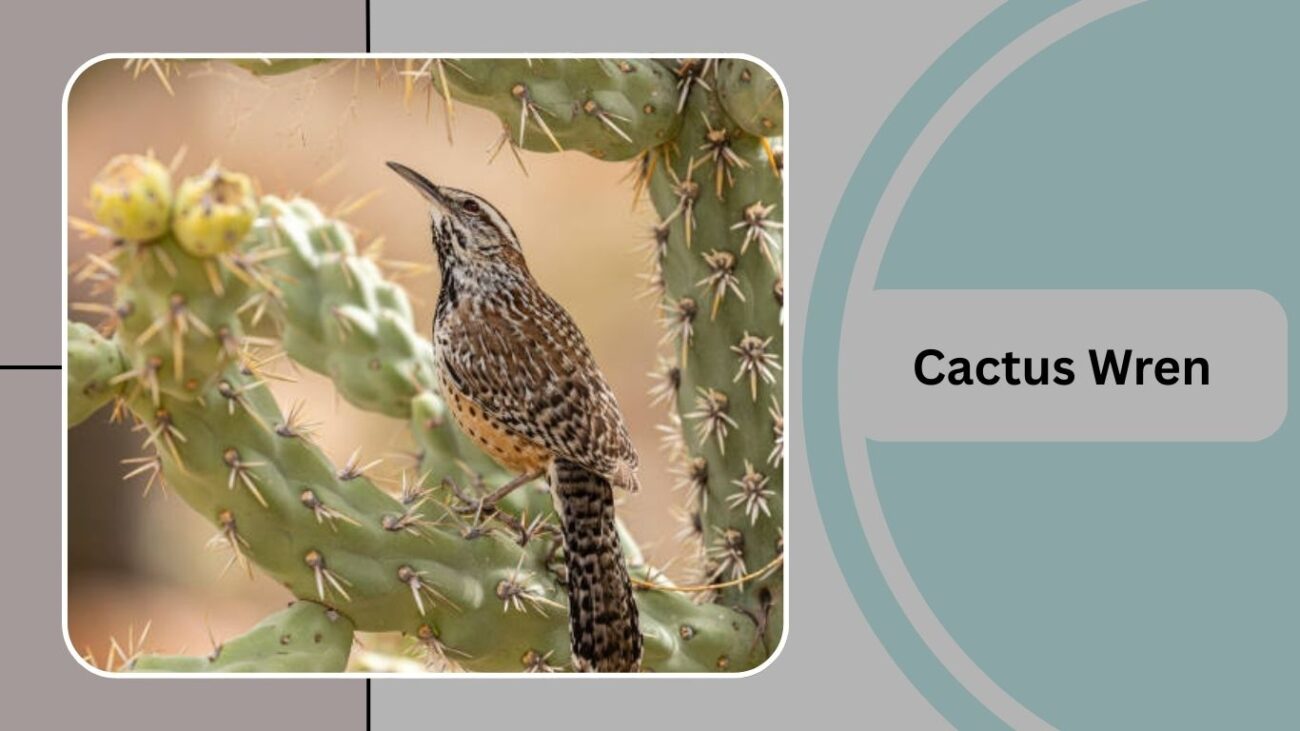The Brown Thrasher is well known for its striking streaked chest, long tail, and habit of foraging vigorously on the ground. Because of its shape, markings, and behaviors, it can be easily confused with several other species across North America and beyond. Many of these similar species belong to the Mimidae family, while others come from the thrush or sparrow groups but share enough traits to cause misidentification. In this guide, we’ll look at 15 birds that look like Brown Thrasher, exploring their identification, habits, and habitats to help distinguish them more easily in the field.
1. Long-billed Thrasher
The Long-billed Thrasher (Toxostoma longirostre) is one of the closest birds that look like a Brown Thrasher, often confusing birdwatchers due to their similar shape, size, and streaked plumage. Both species belong to the Mimidae family, but the Long-billed Thrasher is slightly bulkier with a longer, more curved bill. This adaptation helps it probe into soil and leaf litter for insects.
Identification
- Streaked underparts much like the Brown Thrasher.
- Longer, slightly decurved bill compared to the Brown Thrasher’s straighter one.
- Grayish-brown back with rufous tones, blending well in brushy habitats.
Behaviors and Diet
Just like the Brown Thrasher, the Long-billed Thrasher forages by tossing leaves aside with quick, strong movements. Its diet consists of beetles, ants, grasshoppers, fruits, and seeds. It is also known for its rich and varied song, mimicking other bird species.
Habitat and Range
This bird is mainly found in southern Texas and northeastern Mexico, thriving in dense thickets, scrublands, and river woodlands. Its preference for brushy terrain and similar appearance makes it one of the most commonly mistaken birds that look like Brown Thrashers in the southern United States.
2. Bendire’s Thrasher
Bendire’s Thrasher (Toxostoma bendirei) is frequently mentioned among birds that look like Brown Thrasher because of its slender build, streaked breast, and long tail. At first glance, the two species can be confusing, but Bendire’s Thrasher has softer, paler tones and subtler markings compared to the bold streaks of the Brown Thrasher. One of the most noticeable differences is the bill—it is shorter and straighter than most other thrashers, giving this bird a less aggressive profile.
Identification
- Pale brown upperparts with faint streaking on the chest.
- Distinct yellow-orange eyes, contrasting with its muted facial features.
- Shorter, straighter bill than the Brown Thrasher.
- Long tail with faint white tips, similar to the Brown Thrasher’s.
Behaviors and Diet
Bendire’s Thrasher forages mainly on the ground, scratching through leaf litter and soil for insects, spiders, and seeds. Its behavior is very similar to the Brown Thrasher, often flipping leaves with quick movements. The species is also a singer, though its song is less varied and shorter compared to the Brown Thrasher’s extensive mimicry.
Habitat and Range
This bird inhabits arid grasslands, desert scrub, and open woodlands across the southwestern United States and northern Mexico. Its resemblance to the Brown Thrasher in both form and foraging habits places it high on the list of birds that look like Brown Thrashers in dry habitats.
3. Curve-billed Thrasher
The Curve-billed Thrasher (Toxostoma curvirostre) is another striking candidate among birds that look like Brown Thrasher. While the Brown Thrasher is more common in the eastern U.S., the Curve-billed Thrasher is found in the deserts and shrublands of the Southwest. Their similarities lie in body shape, long tails, and spotted underparts, but their biggest difference is in the bill. The Curve-billed Thrasher’s bill is noticeably down-curved, which makes it easy to distinguish once you get a close look.
Identification
- Grayish-brown overall plumage with faint, dark spots on the chest.
- Long, slightly rounded tail often carried low.
- Strongly down-curved black bill.
- Bright orange to reddish-orange eyes.
Behaviors and Diet
This species feeds primarily on insects, small invertebrates, fruits, and seeds. It uses its curved bill to dig into sandy soil and crevices, which sets it apart from the Brown Thrasher’s straight bill and scratching behavior. Still, its upright posture, tail flicks, and mimic-like calls cause birders to confuse the two. The Curve-billed Thrasher also has a loud “whit-wheet” call that is quite different from the Brown Thrasher’s melodic song.
Habitat and Range
They are abundant in desert scrub, cactus stands, and arid suburban areas in Arizona, New Mexico, Texas, and into Mexico. While their plumage and structure make them one of the closest birds that look like Brown Thrashers, their habitat and curved bill provide the best field clues for distinction.
4. California Thrasher
The California Thrasher (Toxostoma redivivum) is another species often included among birds that look like Brown Thrasher due to its long body, streaked underparts, and extended tail. However, the California Thrasher is larger and has an even more pronounced bill, which curves strongly downward. Its plumage is more uniformly brownish, lacking the heavy chest streaks of the Brown Thrasher, but from a distance, their silhouettes and behaviors are remarkably similar.
Identification
- Large body with plain brown plumage overall.
- Long, decurved bill, longer than the Brown Thrasher’s.
- Underparts lighter, with less streaking compared to the Brown Thrasher.
- Tail long and expressive, often carried upright.
Behaviors and Diet
California Thrashers forage mainly on the ground, using their long bill to dig and sweep aside soil, much like the Brown Thrasher flips through leaf litter. They feed on insects, spiders, berries, and seeds. Their song is complex and melodic, though less mimicking than the Brown Thrasher’s, consisting of whistles, warbles, and harsh notes.
Habitat and Range
This species is native to coastal California chaparral habitats, thriving in dense shrubs and thickets. Its ground-foraging style and elongated body make it one of the classic birds that look like Brown Thrasher, though its range is limited to the western U.S.
5. Sage Thrasher
The Sage Thrasher (Oreoscoptes montanus) is another member of the Mimidae family that is commonly mistaken for the Brown Thrasher. It is smaller and paler overall but shares the same slim body, streaked chest, and long tail, making it one of the most convincing birds that look like Brown Thrasher in its habitat.
Identification
- Grayish-brown upperparts with heavy streaking on the underparts.
- Yellow eyes, similar to some Brown Thrashers.
- Shorter bill compared to most thrashers, straighter than the California Thrasher’s.
- About 7–9 inches long, making it smaller than the Brown Thrasher.
Behaviors and Diet
Sage Thrashers forage for insects, spiders, and berries, often running along the ground like the Brown Thrasher. Their song is a series of varied whistles and trills, delivered rapidly, similar to the mimic-like tendencies of their relatives.
Habitat and Range
They inhabit sagebrush plains and desert scrublands in the western U.S. and into Canada. In these dry landscapes, their streaky breast and foraging behavior can easily mislead birdwatchers into identifying them as birds that look like Brown Thrashers, though they prefer open sage environments over dense thickets.
6. Crissal Thrasher
The Crissal Thrasher (Toxostoma crissale) is another species often mistaken among birds that look like Brown Thrasher because of its long tail and overall shape. Unlike the Brown Thrasher’s bright streaked underparts, the Crissal Thrasher is more uniform in color, with plain brown upperparts and a grayish underside accented by reddish-orange undertail coverts. Despite the difference in markings, its size, posture, and behavior can create confusion for birdwatchers.
Identification
- Overall gray-brown plumage with a plain chest.
- Long, strongly curved bill.
- Distinct reddish-orange feathers beneath the tail, a key feature.
- Long tail often flicked and carried low.
Behaviors and Diet
Crissal Thrashers forage in dense brush, probing with their bills in soil and leaf litter for beetles, ants, grasshoppers, and other invertebrates. They also consume fruits and seeds. Their song is rich, melodious, and varied but not as mimic-heavy as the Brown Thrasher’s.
Habitat and Range
Native to the deserts of the southwestern United States and northern Mexico, Crissal Thrashers prefer dense thickets, mesquite, and desert scrub. While their plumage is plainer, their silhouette and foraging style make them one of the closest birds that look like Brown Thrasher in arid landscapes.
7. Gray Thrasher
The Gray Thrasher (Toxostoma cinereum) is a striking species that belongs to the same family and is another one of the birds that look like Brown Thrasher. Although grayer in overall tone, its streaked breast, long body, and thrashing behavior make it appear very similar in shape and habits.
Identification
- Pale grayish upperparts with streaked underparts.
- Yellow eyes, which resemble the piercing gaze of some Brown Thrashers.
- Long, decurved bill, darker than the plumage.
- Tail long and rounded, often used for balance while foraging.
Behaviors and Diet
Gray Thrashers forage mainly on the ground, flipping leaves and digging for insects, spiders, and seeds. They also feed on fruits and occasionally small reptiles. Their song is strong and variable, echoing the mimicry style of the Brown Thrasher but slightly less diverse.
Habitat and Range
This species is restricted to Baja California in Mexico, where it thrives in scrublands, deserts, and thorny vegetation. Its long, lean shape and patterned chest keep it firmly on the list of birds that look like Brown Thrasher, though it is limited geographically to western Mexico.
8. LeConte’s Thrasher
LeConte’s Thrasher (Toxostoma lecontei) is another member of the Mimidae family that is often confused with birds that look like Brown Thrasher. Unlike the bold streaked chest of the Brown Thrasher, LeConte’s is much plainer, showing pale sandy-gray plumage adapted for desert life. Still, its size, body structure, and foraging behavior create a resemblance that makes many birdwatchers place it in the same category.
Identification
- Pale sandy-gray upperparts with whitish underparts.
- Long tail, often darker at the tips.
- Decurved bill, slightly shorter than that of the Curve-billed Thrasher.
- Lacks heavy streaking, giving it a cleaner look than the Brown Thrasher.
Behaviors and Diet
LeConte’s Thrasher spends most of its time on the ground, running quickly between shrubs and scratching for insects, spiders, and small seeds. Its feeding style is similar to the Brown Thrasher, tossing aside debris in search of prey. Though not as accomplished a mimic, its song is still melodious and flute-like, echoing through arid landscapes.
Habitat and Range
Found in the deserts of the southwestern United States and northwestern Mexico, this species thrives in sandy washes, saltbush flats, and desert scrub. Its subtle plumage contrasts with the Brown Thrasher’s bold patterning, but its structure and behavior make it one of the plainer birds that look like Brown Thrasher.
9. Northern Mockingbird
The Northern Mockingbird (Mimus polyglottos) is one of the most recognized birds that look like Brown Thrasher due to its similar size, body shape, and long tail. While it lacks the heavy streaking of the Brown Thrasher, its grayish-brown plumage and upright stance make it easy to confuse the two at a glance.
Identification
- Gray to brown upperparts with pale underparts.
- Long tail with white outer feathers, visible in flight.
- Straight, slender bill compared to the Brown Thrasher’s heavier one.
- Slightly smaller overall than the Brown Thrasher.
Behaviors and Diet
Mockingbirds are famous for their incredible vocal range, mimicking dozens of other bird species as well as mechanical noises. Their diet includes insects like beetles and grasshoppers in summer, and fruits and berries in winter. Their ground-foraging style, paired with tree-top singing, mirrors many behaviors of the Brown Thrasher.
Habitat and Range
Found throughout most of North America, Northern Mockingbirds thrive in open areas with shrubs, gardens, and urban landscapes. Their wide range and resemblance make them one of the most commonly misidentified birds that look like Brown Thrasher.
10. Gray Catbird
The Gray Catbird (Dumetella carolinensis) is another close relative in the Mimidae family and is often grouped with birds that look like Brown Thrasher. Although smaller and darker overall, its sleek shape, long tail, and habit of mimicking songs create confusion with its cousin.
Identification
- Slate-gray plumage overall with a distinctive black cap.
- Rusty-red patch beneath the tail, hidden unless seen up close.
- Slim, straight bill.
- Smaller size than the Brown Thrasher, but body shape is similar.
Behaviors and Diet
Gray Catbirds forage for insects, spiders, and berries in dense shrubs. Their song is a mix of whistles, squeaks, and mews (like a cat), as well as mimicry of other birds, much like the Brown Thrasher’s rich song repertoire.
Habitat and Range
They prefer thickets, forest edges, and gardens across North America, especially in the breeding season. While darker and plainer in color, their structure and mimicry habits place them firmly among birds that look like Brown Thrasher.
11. Wood Thrush
The Wood Thrush (Hylocichla mustelina) is one of the more delicate-looking birds that look like Brown Thrasher because of its warm brown plumage and spotted underparts. While it is stockier and shorter-tailed than the Brown Thrasher, its heavily marked chest can easily mislead birdwatchers, especially in dim woodland light.
Identification
- Rich reddish-brown upperparts with a white underside.
- Bold black spots across the chest and flanks.
- Straight, medium-length bill, unlike the longer bills of thrashers.
- Slightly smaller and more compact than the Brown Thrasher.
Behaviors and Diet
Wood Thrushes forage on the ground, flipping leaves and scratching in the soil for insects, snails, and small invertebrates. They also eat fruits and berries later in the season. Known for their ethereal flute-like song, they differ vocally from the mimicry of the Brown Thrasher, yet their behavior and appearance still put them among birds that look like Brown Thrasher.
Habitat and Range
They are found in mature deciduous forests across eastern North America during summer, migrating to Central America in winter. Their woodland preference contrasts with the Brown Thrasher’s brushy habitats, but visual similarities often cause confusion.
12. Hermit Thrush
The Hermit Thrush (Catharus guttatus) is another member of the thrush family often grouped with birds that look like Brown Thrasher. While much smaller, its spotted chest, earthy plumage, and foraging style on the forest floor create a resemblance.
Identification
- Brown upperparts with rufous tail that contrasts against the back.
- Pale underside with distinct dark spots on the breast.
- Small, slender bill.
- Shorter tail than the Brown Thrasher but used similarly for balance.
Behaviors and Diet
Hermit Thrushes forage by hopping along the ground, searching for insects, beetles, and berries. Their behavior is similar to the Brown Thrasher, though they are less aggressive foragers. Their song is one of the most beautiful in North America, a series of clear, fluting phrases.
Habitat and Range
They breed in northern forests and mountainous areas of the U.S. and Canada, migrating south in winter. Their smaller size is the main difference, but their spotted breast and earthy tones make them easy to confuse as one of the birds that look like Brown Thrasher.
13. Song Thrush
The Song Thrush (Turdus philomelos) is a European species that belongs on the list of birds that look like Brown Thrasher due to its streaked chest and earthy-brown plumage. While not native to North America, birdwatchers in Europe often mistake it for similar species because of its resemblance to thrashers.
Identification
- Warm brown upperparts with a creamy underside.
- Bold, dark streaks on the breast and flanks.
- Short, straight bill compared to the Brown Thrasher’s longer one.
- More compact, robin-like build but with thrush-like markings.
Behaviors and Diet
Song Thrushes forage mostly on the ground, flipping leaves and searching for worms, snails, and insects, much like the Brown Thrasher’s feeding style. They are also known for cracking snail shells against rocks to get at the meat inside. Their melodious song is famous, consisting of repeated musical phrases, though it differs from the mimicry-heavy song of the Brown Thrasher.
Habitat and Range
Found across Europe, parts of Asia, and introduced populations in New Zealand, they thrive in woodlands, gardens, and hedgerows. Though smaller, their bold streaking and ground-foraging behaviors make them appear among the classic birds that look like Brown Thrasher.
14. Fox Sparrow
The Fox Sparrow (Passerella iliaca) is a chunky sparrow that also qualifies as one of the birds that look like Brown Thrasher. Its reddish plumage and heavily streaked breast bear a striking resemblance, especially in its eastern forms.
Identification
- Reddish-brown back and wings with a streaked white underside.
- Streaks often converge into a central spot on the chest.
- Shorter bill than the Brown Thrasher, conical and sparrow-like.
- Stockier, shorter-tailed build but with similar markings.
Behaviors and Diet
Fox Sparrows forage vigorously on the ground, scratching with both feet to uncover insects, seeds, and berries. This feeding style mirrors the Brown Thrasher’s leaf-flipping, making them seem related at a glance. Their song is a sweet, whistling series of notes, quite different from the varied mimicry of the Brown Thrasher.
Habitat and Range
They breed in northern forests and mountainous regions across North America, migrating south for the winter. Their reddish hues and heavily streaked breast often lead birdwatchers to misidentify them as birds that look like Brown Thrasher in woodland and brushy habitats.
15. Cactus Wren
The Cactus Wren (Campylorhynchus brunneicapillus) is the largest wren in North America and is sometimes mistaken as one of the birds that look like Brown Thrasher because of its spotted chest, earthy tones, and active ground-foraging behavior. Although wrens are generally smaller, this species’ size and markings bring it closer in appearance to thrashers.
Identification
- Brown upperparts with bold white eyebrows.
- Whitish underparts covered in dark spots, reminiscent of the Brown Thrasher’s streaking.
- Short, slightly curved bill compared to the longer bill of thrashers.
- Long tail with dark barring, often carried upright.
Behaviors and Diet
Cactus Wrens are busy, noisy birds that forage on the ground and in shrubs for insects, spiders, fruits, and seeds. They frequently flip through leaf litter much like a Brown Thrasher. Their call is a harsh, raspy chatter, unlike the melodic or mimicking songs of thrashers, but their movement and feeding style cause confusion in the field.
Habitat and Range
They are common in arid regions of the southwestern United States and Mexico, thriving in deserts with cacti, mesquite, and thorny shrubs. While smaller, their spotted breast and active behavior place them among the classic birds that look like Brown Thrasher in desert habitats.


